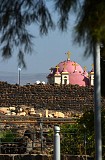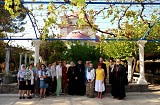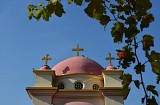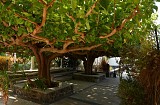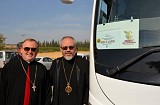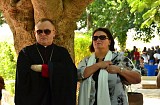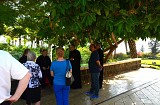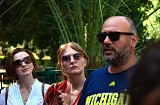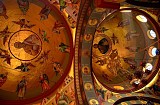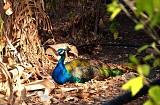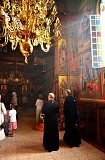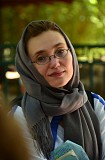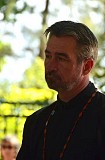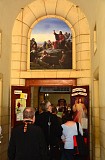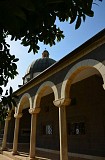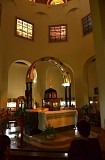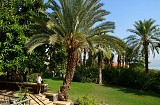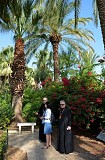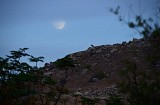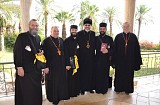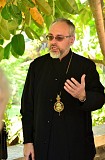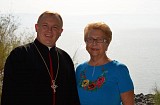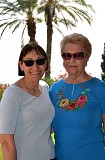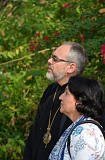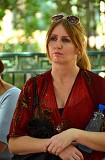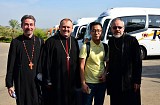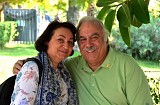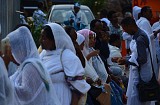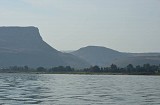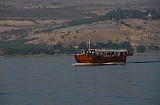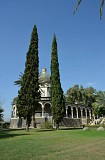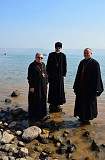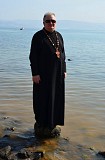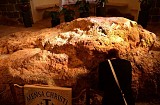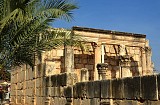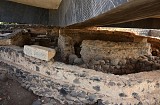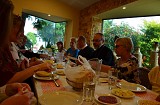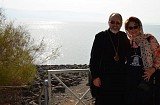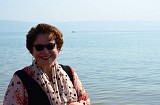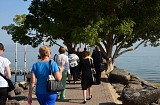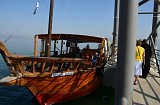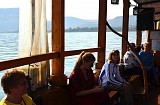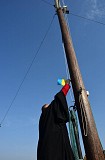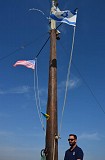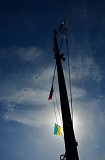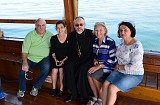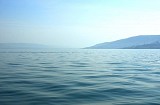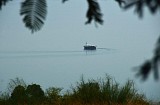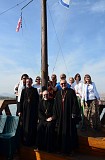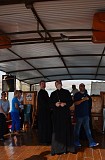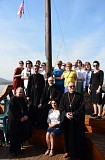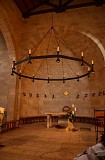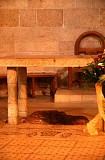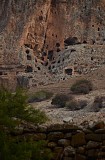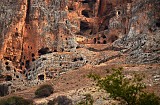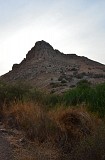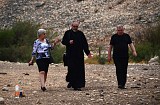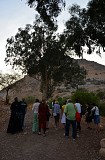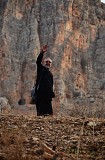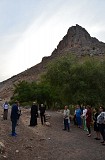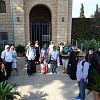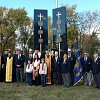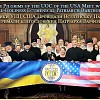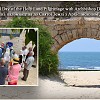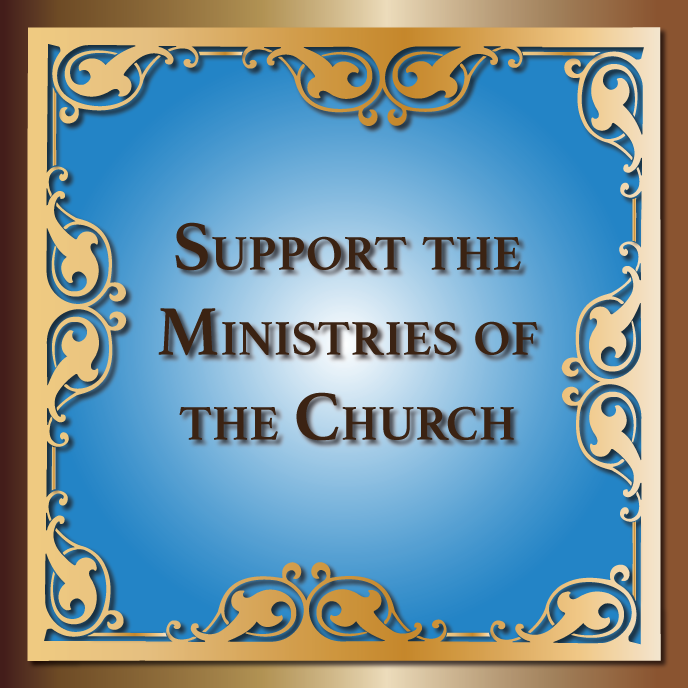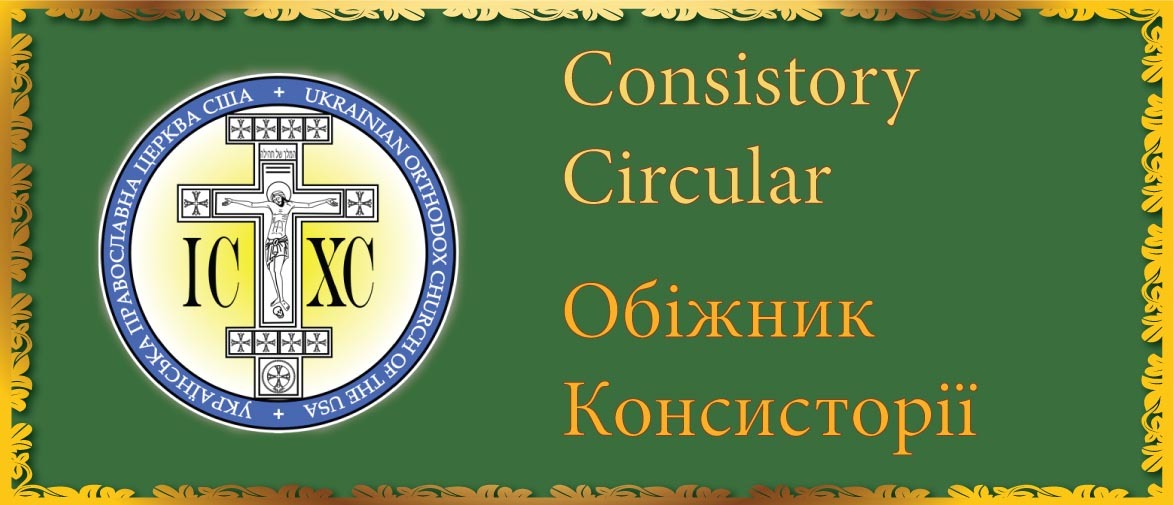Pilgrims of the Ukrainian Orthodox Church of the USA Fulfill 3rd day of Their Pilgrimage to Holy Land
Третій день паломництва паломників Української Православної Церкви УПЦ США на Святу Землю
Reflection and Photos by Elizabeth Symonenko, Consistory Secretary
With so much to see and do, it is no wonder the roosters in Nazareth crow early. They were waking us just after 4 a.m., compelling us to get going, because we had a day full of wonder ahead.
Today we would experience Christ through the locations He visited during his life on earth. Most of His adult life was spent in Capernaum. This is where He ministered, preached, healed, and from where He selected His Disciples. Therefore, it was apropos that we should begin today’s pilgrimage by visiting the Greek Orthodox Church of the Twelve Apostles.
We left the hotel just after 8 a.m. and wound our way through Nazarath and Cana on our way to Capernaum. During the drive, Khalil our guide educated us on a number of historic events which took place in the mountains we were speeding past. For example, we learned about the Battle of Hattin which took place in 1187, between the Crusader Kingdom of Jerusalem and the forces of Saladin. It is also known as the Battle of the Horns of Hattin, from a nearby extinct volcano, which we could view out our right window. It didn’t take much to imagine the battle unfolding on that very plain before us. The Crusaders and their horses overburdened and exhausted in the heat, out maneuvered by the Saladin’s troops who were conditioned to withstand the heat, and who rode sprier Arabian horses.
As the bus wound along a number of curves, taking us lower and lower, one final turn and ahead of us, was the Sea of Galilee. It was hard to distinguish it through the morning haze, but, the sun’s reflection dancing along the waves revealed the waters. The Sea of Galilee, which we have heard so much about, which was so important in Christ’s ministry, was right there below us.
One final turn and we had arrived at the Church of the Twelve Apostles. Walking along the path to the church we were amazed by fowl; chickens, turkeys and peacocks greeted us. Walking under a grape vine covered portico we could see the pink domes of the church. It was breathtakingly beautiful, like something out of fairytale, pleasing to the eye. However, when we walked in we were overcome by the beauty and sanctity found within. The rising sun’s rays cast wands of wondrous light throughout, as they illuminated the smoky incense laden atmosphere, igniting the halos of all the saints depicted in the many icons.
Inside one dome, Christ the Pantocrator (All-powerful) is surrounded by a chorus of 12 prophets who foretold of His coming. In the other dome is a figure which looks like a white haired Christ. This is a depiction of the “Ancient of Days’ mentioned in the Gook of Daniel. Other frescoes and icons depict the Crucifixion, the Resurrection, the Theotokos, saints who lived in the Holy Land and Galilean scenes from the Gospels — Jesus walking on the water, the calming of the storm, the miraculous catch of fish and the healing of the paralyzed man.
You couldn’t miss the icon over the door, the last thing you would see before leaving the heavenly realms of the church, heading out in to the world. I had to stop and give it a good look to understand all that was portrayed in the fresco, which is a dramatic portrayal of Judgement Day, reminding us that we will be judged by what we do during our earthly lives. It vividly conveys the contrast and tension between the glory of those who are saved (on the left – which is Christ’s right) and the horror of those who are damned (on the right). The two groups are separated by a river of fire leading down to hell.
We enjoyed the lovely grounds and gardens, as well. This was our first introduction to the Sea of Galilee, as well. The garden path led us to a gate which opened up to allow access to the waters below. While some of us made our way down, others remained behind enjoying the peaceful surroundings.
Our next stop would be at the Roman Catholic Church of the Beatitudes. This church was built near the location where Christ gave the sermon on the Mount, and explained the eight delineated in Matthew 5:3-11.
“Blessed are the poor in spirit, for theirs is the kingdom of heaven.
Blessed are they who mourn, for they shall be comforted.
Blessed are the meek, for they shall inherit the earth.
Blessed are they who hunger and thirst for righteousness, for they shall be satisfied.
Blessed are the merciful, for they shall obtain mercy.
Blessed are the pure of heart, for they shall see God.
Blessed are the peacemakers, for they shall be called children of God.
Blessed are they who are persecuted for the sake of righteousness, for theirs is the kingdom of heaven."
The original Byzantine church was erected nearby in the 4th century, and it was used until the 7th century. Its ruins have been discovered downhill from the present church, and it would only make sense that Christ landing on the shore, was met by a crowd, whom He stopped to teach. He would not have walked passed them and ascended to the top of the hill, where the current structure is located.
The lovely gardens have numerous hidden nooks and secluded areas which were filled by pilgrims of various denominations and nations. Overlooking the northwestern shore of the Sea of Galilee, the complex offers an enchanting vista of the northern part of the lake and across to the cliffs of the Golan Heights on the other side. Palm trees sway in the breeze and the bougainvillea adds a riot of color.
We once again bumped in to the Romanian pilgrims whom we met the other day. With smiles on their faces, they came up to His Eminence Archbishop Daniel, and greeted him like an old friend. While some of our pilgrims followed them in to the eight sided church representing the eight beatitudes, which were also written in Latin on the upper windows, others took the opportunity to walk the lovely grounds, enjoying the birds, the flowers and the cool breeze.
One of the rewarding things one experiences while visiting these popular sites, is that we get to meet and witness a myriad of people come from all over the globe, wishing to get closer to Christ. On our way to the bus, a man from China stopped His Eminence and asked for a photo with him. He was the first of many who would seek out Archbishop Daniel this day to share a few words and post for a few photos.
At our very next stop once again, His Eminence was smiling and shaking hands, this time with a young priest from South Korea, who just so happened to have studied in D.C. Have exchange pleasantries with the other pilgrims we headed down the long walk to the Primacy of Peter church, also believed to contain the “rock table” upon which Christ served breakfast to the Apostles after His resurrection. They had fished all night, but, caught nothing. Then they heard a voice from the shore, but, due to the haze were not able to discern who it was that was speaking to them. He told them to throw the nets off the ride side of the boat, and having followed these instructions, the Apostles caught 153 fish. Only then did St. John state to St. Peter that this must be Christ who had spoken to them. Peter put on his clothing and jumped in to the water to swim to shore and greet Jesus. By the time they all reached the shore, Christ had already prepared them breakfast. Christ was sending them out in to the world to preach to all nations, and the catching of 153 reflected the number of nations upon the earth at that time.
Having stopped and prayed in the church, everyone headed outside and to the Sea of Galilee. This was our opportunity to dip our hands and feet in to the water made so famous by the Bible. With a little help from my friends, I too, reached the shores of the sea, and was able to touch the water upon which Christ walked. With nations being the topic at hand, it was appropriate that His Eminence once again touched another nation, by befriending pilgrims from India, and upon exiting the grounds of the church, he exchanged pleasantries with Ethiopian pilgrims. It truly is a small world, and getting smaller.
Our next stop was in the city which Jesus called home, Capernaum. We first visited the site of Peter’s house. This was an eight walled structure – eight representing infinity, and the endlessness of Christ. Atop the house, is built a Roman Catholic church, which seems to float over the ruins.
To the side once can see intricate remains of the city, itself. Room are clearly delineated, as well as entryways, kitchens, etc. Standing there gazing down upon the dark stone remains, one can almost hear the giggle of young children as they ran through the streets, and smell the food cooking in the kitchen with the aroma wafting out the window. These homes were made of dark lava rock, because this area is located upon a geological rift, and while volcanos do not exist, historically lava merely flowed out of the ground. Therefore, volcanic rock was a common and affordable building material.
Shining above the dark stone, and gleaming almost white in the hot son, stood the synagogue. The ruins of the temple were impressive. I had often learned about the various column types humanity has had throughout history – Ionic, Doric and Corinthian, and I got goosebumps when I looked up and saw the remains of Corinthian columns. This synagogue was certainly frequented by Christ. Jesus worshipped and taught in the synagogue — where his teaching made a deep impression on the local people because, unlike the scribes, he taught with authority. In the same synagogue, Jesus promised the Eucharist in his “I am the bread of life” discourse: “Very truly, I tell you, unless you eat the flesh of the Son of Man and drink his blood, you have no life in you.” (John 6:22-59)
Our next destination took us out onto the Sea of Galilee as we boarded an old wooden boat which would take us on a short trip. It was amazing to be upon the same water which the Apostles caught fish out of, that Peter tried to walk on water, Christ calmed the storm, etc. It was amazing to contemplate that as we swayed on the waves, so had the Apostles, and Christ.
Having disembarked off the boat we now headed to the area where Christ performed the miracle of the 5 loves and 2 fish, feeding over 5,000 men. The church revealed a rock thought to be the location of this miracle. Just in front of the altar is the famous mosaic on the floor of the fish and loaves.
All this talking about fish made us hungry, and we stopped by the have lunch – Peter’s fish. It was nice to sit and rest, and chit chat with our fellow pilgrims.
Rested and satiated we had time for one last stop. This time we went to a place that was far from the water. We visited the Valley of Doves, which is a natural valley running between mountains, and utilized in the old days as a foot path. This would have been the road Christ used when he walked from one city to the next. In the tall cliffs one could see a number of caves, which had been used historically to hide people.
With all we saw still swirling in our heads, we made our way back to the hotel, where we would spend a number of hours reliving our memories, and resting to prepare for tomorrow’s adventure.
Day 3 - Pilgrimage to Holy Land 2016 - 11/12/2016
Photos by Elizabeth Symonenko
(81 images)
|
| |||||||||||||
